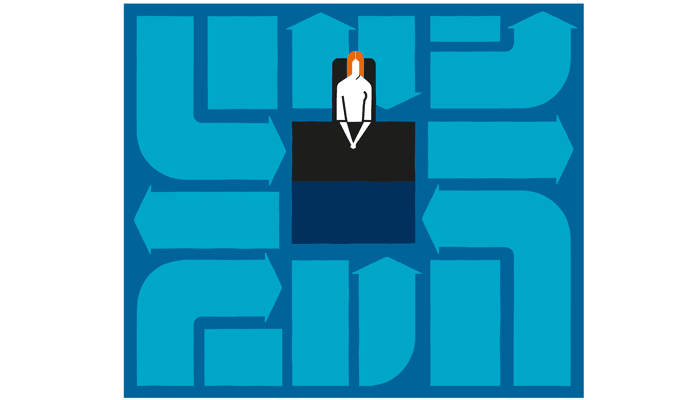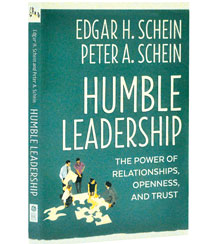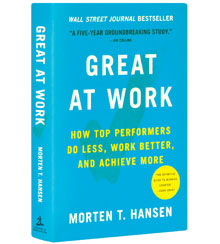Best Business Books 2018: Management
Revising the Managerial Playbook. See also Top Shelf Picks: Best Business Books 2018.
Edgar H. Schein and Peter A. Schein
Humble Leadership: The Power of Relationships, Openness, and Trust (Berrett-Koehler, 2018)
*A TOP SHELF PICK
Morten T. Hansen
Great at Work: How Top Performers Do Less, Work Better, and Achieve More (Simon & Schuster, 2018)
Heidi Grant
Reinforcements: How to Get People to Help You (Harvard Business Review Press, 2018)
Yesterday, managers were the wizards of business. They learned profitability and productivity incantations at various branches of the Hogwarts School of Business. They were privy to arcane corporate knowledge that was withheld from the mere mortals in the rank and file. They pointed their wands, and the workforce did their bidding.
Tomorrow, it’s likely that employees will manage themselves. The incantations and knowledge that were once the manager’s stock-in-trade will be at their fingertips, perhaps on their smartphones. With the help of computers imbued with artificial intelligence, they will decide their own direction.
But what should managers be doing today? The authors of this year’s best business books on management offer conflicting answers. MIT professor emeritus Edgar Schein and his son Peter, now colleagues at the Organizational Culture and Leadership Institute, see a new, relationship-based managerial culture emerging. University of California at Berkeley management professor Morten Hansen identifies practices that defined high performance in the recent past and urges contemporaries to copy them. And social psychologist Heidi Grant of the NeuroLeadership Institute offers managers a way to develop a skill that they will surely need at some point — no matter what their future holds.
Relationship Management
Like Edgar Schein himself, Humble Leadership: The Power of Relationships, Openness, and Trust is quietly, but fundamentally, subversive. “We see leadership as a complex mosaic of relationships, not as a two-dimensional (top-down) status in the hierarchy, nor as a set of unusual gifts or talents of ‘high-potential’ individuals,” declare the Scheins.
They argue that conventional management has reached its limits. “We see U.S. business culture continue to espouse the individual hero myth leader, and a machine model of hierarchical organization design that not only undermines its own goals of employee engagement, empowerment, organizational agility, and innovative capacity, but also limits its capacity to cope with a world that is becoming more volatile, uncertain, complex, and ambiguous.” In addition, say the authors, the social and work values of younger workforce cohorts are simply incompatible with conventional top-down management practice.
Humble Leadership proposes establishing and maintaining relationships as the new measurement of managerial effectiveness. Leadership is a collective endeavor, write the Scheins, “a process of learning, sharing, and directing new and better things to do in the dynamic interpersonal and group processes that increasingly characterize today’s organizations.” In this scenario, managers exert influence through building personal relationships with employees.
Personal relationships? If that makes your inner manager vaguely uneasy, it’s understandable. It’s the rare company that still encourages managers to dominate and coerce employees — a relationship that the Scheins identify as “Level Minus 1.” But lots of companies expect managers to keep employees at arm’s length, maintaining a “Level 1” relationship that most of us will recognize as “professional.”
A Level 1 relationship is a good insulator, especially when a manager is called upon to deliver a lousy performance review or a pink slip. But it won’t be enough to get things done when the day comes when managers can’t just order people about. To thrive in that environment, managers will need to establish “Level 2” relationships, which the Scheins define as “personal cooperative, trusting relationships as in friendships and in effective teams.”
The authors credit Ken Olsen, who cofounded Digital Equipment Corporation (DEC), with using Level 2 relationships to build the computer company over several decades. “Having hired the best technical talent, [Olsen] accepted his vulnerability (of not having all the answers as the founder) but trusted his experts to make the best technical decisions while he created a personal environment of openness and trust,” they write. “He empowered his key employees and made himself reliant on them. He wanted the market to decide whether the decisions were good ones or not. He humbled himself both to his employees and to the realities of the market.”
It worked. DEC, founded in 1957, was IBM’s biggest rival for a while in the 1980s. But there’s a cautionary postscript to the story: As the company grew more successful, the young engineers whom Olsen had empowered became powerful managers themselves, and they didn’t always internalize the message. “[They] build their own empires, and begin to fight with each other,” write the Scheins. “At DEC, trust eroded very quickly.… In the end Ken was increasingly sidelined by the very people he had empowered.” In 1992, Olsen was forced out of the company he had founded. The lesson: Conventional management culture is powerful, and it can easily undermine more enlightened approaches.
To create Level 2 relationships, managers need to practice personization. The Scheins define the coined term as “the process of mutually building a working relationship with a fellow employee, teammate, boss, subordinate, or colleague based on trying to see that person as a whole, not just in the role that he or she may occupy at the moment.”
What’s the benefit of personizing work relationships? “Our basic argument,” explain the authors, “is that you would want to do this in order to maximize the possibility that you will be open and honest with each other and will feel safe in reporting when things are not going well, when you don’t understand each other, when you don’t agree with each other, and, most important, when you need each other’s help.”
For its conception of an alternative managerial culture and as a fitting capstone to Edgar Schein’s prior books, Helping and Humble Inquiry, Humble Leadership is the best business book on management this year.
The Good Fight
Morten Hansen’s approach to management is the polar opposite of the Scheins’. He extrapolates a view of managerial excellence from past performance and presents it in a style that closely echoes the work of Jim Collins. This is unsurprising: Hansen coauthored Great by Choice, an exploration of organizational agility and adaptability published in 2011, with Collins.
Great at Work: How Top Performers Do Less, Work Better, and Achieve More reports the findings of what Hansen bills as “one of the most comprehensive research projects ever undertaken on individual performance at work.” Hansen and colleagues conducted a five-year study of 5,000 managers and employees. Hypotheses were formulated and confirmed; behaviors were identified; links to high performance were established. This is all described in a 30-page research appendix presented in a suitably minuscule font — an unmistakable signal that it can be skipped.
The research yielded a “work smart” theory composed of seven practices, which are the subject of the book proper. (“It always seems to be seven, doesn’t it?” asks Hansen parenthetically.) The first four practices are aimed at mastering your own work, and the last three practices are focused on mastering working with others. The latter three speak directly to the role of managers. “Analyzing our data,” writes Hansen, “we found that the top performers mastered working with others in three areas: advocacy, teamwork, and collaboration.”
In terms of advocacy, Hansen found that high performance is associated with “forceful champions,” who, he says, “effectively pursued their goals at work by mastering two skills to gain the support of other people. They inspired others by evoking emotions, and they circumvented resistance by deploying ‘smart grit.’” You evoke emotions by upsetting people about the present and exciting them about the future. You deploy smart grit by sticking to your guns and tailoring your tactics to persuade opponents that you’re right.
For its conception of an alternative managerial culture, Humble Leadership is the best business book on management this year.
Managers get teams working effectively by first encouraging good fights, according to the author. “When teams have a good fight,” explains Hansen, “team members debate the issues, consider alternatives, challenge one another, listen to minority views, scrutinize assumptions, and enable every participant to speak up without fear of retribution.” Then, managers require them to unite — that is, to “commit to the decision taken (even if they disagree) and all work hard to implement the decision without second-guessing or undermining it.”
You foster collaboration, says Hansen, by taking a “disciplined” approach to it. That means refusing to pursue collaboration as an end in itself, as the Scheins propose. Rather, writes Hansen, you adopt “a set of practices that allows you to first assess when to collaborate (and when not to) and to implement the effort so that people are both willing and able to commit to it and deliver results.”
The prescriptive advice that Hansen offers in the three areas above is nuanced, but it is also clearly rooted in what Edgar Schein calls the current management culture. Managers who subscribe to Great at Work position themselves as the principal actors on the business stage. They are always pushing and pulling others to achieve goals that they set or that come down to them from higher up the ladder.
Help!
All managers, except the most authoritarian, will want to read Heidi Grant’s Reinforcements: How to Get People to Help You. It’s a slim book on a topic that shouldn’t, at first glance, merit a book-length treatment: asking for help. Yet it turns out that the topic is complicated, because asking for help is fraught with stress.
Stanley Milgram, the Yale professor who famously discovered that our unwillingness to question authority extended to a willingness to zap each other with electricity, also found that for many of us, asking for help is profoundly uncomfortable. He learned this in the 1970s by sending graduate students into Manhattan’s subways to ask riders for their seats. “The good news: 68 percent of people willingly gave up their seats upon request,” reports Grant, a social psychologist by training. “The bad news: conducting the study was — to this day — among the worst, most traumatic experiences his students had had in their lifetimes.”
Milgram didn’t buy the results of his research, so he tried it himself. When he finally mustered the nerve to ask for another rider’s seat, he said, “I was overwhelmed by the need to behave in a way that would justify my request. My head sank between my knees, and I could feel my face blanching. I was not role-playing. I actually felt as if I were going to perish.”
Why is asking for help so difficult? Grant calls out two commonly cited reasons and then proceeds to show why neither should hold us back.
The first is that we assume our help requests will be refused. Grant cites numerous studies showing that not only do people want to be helpful, but they also are willing to devote more energy to helping us than we expect. It turns out that even people who have refused to help us in the past are apt to help us: People don’t want to seem unhelpful, and refusing a second request for assistance raises the likelihood of that.
The second reason is that we assume asking for help will make us less likable or — in terms that might be more relevant to requesting help at work — less competent. But Grant says it does the opposite. If you help someone else, it’s hard to think poorly of that person, because that would create cognitive dissonance. As a result, you are likely to try to resolve that dissonance by bolstering your opinion of the person. Ben Franklin knew this: In the 1730s, he won over a political opponent by asking to borrow a rare book from his opponent’s library. Not only did he get the book, he got the man’s lifelong friendship.
Grant devotes more than half of Reinforcements to describing how people can effectively enlist others’ help. Some of her advice is common sense: For instance, we’re all busy, so we may not notice you need help, or if we do notice, we may think that you won’t want our help. So, if you want help, you have to ask for it. Some of her advice is more nuanced: For instance, don’t try to con us into thinking that helping you whitewash the fence will be fun. It worked for Tom Sawyer, but that was fiction.
Why should managers learn to ask for help? It’s all about the relationships.
“Although the idea of asking for even a small amount of help makes most of us horribly uncomfortable, the truth about modern work is that we rely, more than ever, on the cooperation and support of others,” explains Grant. “No one succeeds in a vacuum, whether you are in an entry-level position or have a view from the C-suite.” The management vogue for cross-functional teams, agile project management, and new organizational structures that minimize hierarchy are pushing people to collaborate more, and thus “having to suffer the small agony of asking people to help us on a regular basis,” she continues. “If you are a leader, you need to figure out how to elicit and coordinate helpful, supportive behavior from the people you are leading, too. Arguably, that is what management is.”
Indeed.
Author profile:
- Theodore Kinni is a contributing editor of strategy+business. He blogs at Reading, Writing re: Management.








